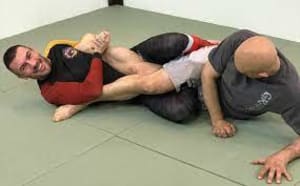
Brazilian Jiu-Jitsu (BJJ) is a martial art known for its intricate grappling techniques, and leg locks have emerged as a significant aspect of the sport. Leg locks involve manipulating an opponent's lower limbs to submit them, and they've generated both fascination and controversy within the BJJ community. In this article, we'll delve into the world of leg locks in BJJ, exploring various techniques and the debates surrounding their usage.
Leg locks primarily target the knee, ankle, or foot joints of an opponent, aiming to hyperextend or compress them to force a submission. There are two main categories of leg locks in BJJ: heel hooks, which target the knee and ankle, and straight ankle locks, which focus on the ankle and foot.
Common Leg Lock Techniques Include:
Heel Hook: A heel hook is a powerful leg lock that can be applied quickly and with little warning. It involves controlling an opponent's heel and twisting it, putting immense pressure on the knee joint. Heel hooks can cause severe injuries if not applied correctly or if resisted too long, making them a subject of controversy in BJJ.
Straight Ankle Lock: The straight ankle lock is a fundamental leg lock that puts pressure on the ankle joint. It is considered a safer and more controlled technique compared to heel hooks. However, it requires precise positioning and execution to secure the submission.
Kneebar: A kneebar targets the knee joint by hyperextending it. This technique can be applied from various positions, and it is considered less risky than heel hooks but still demands caution to prevent injuries.
The controversy surrounding leg locks in BJJ primarily revolves around safety concerns and their perceived "cheap" or "dirty" nature in some circles. Here are some key points of contention. Heel hooks, in particular, are viewed as high-risk submissions due to their potential to cause severe knee injuries if applied with excessive force or resistance. Critics argue that their use should be limited or heavily regulated to protect practitioners. Some traditionalists argue that leg locks rely more on strength and explosiveness than technique, deviating from the core principles of BJJ. Proponents counter that mastering leg locks requires skill and finesse, like any other aspect of the art. Critics contend that leg locks may not be as effective in real-life self-defense scenarios, leading some academies to limit their use or prioritize other techniques. Advocates argue that leg locks offer valuable options in both sport and self-defense situations. The rules surrounding leg locks can vary significantly between BJJ organizations and competitions, adding to the controversy. Some organizations permit all forms of leg locks, while others restrict certain techniques or belt ranks from applying them.

